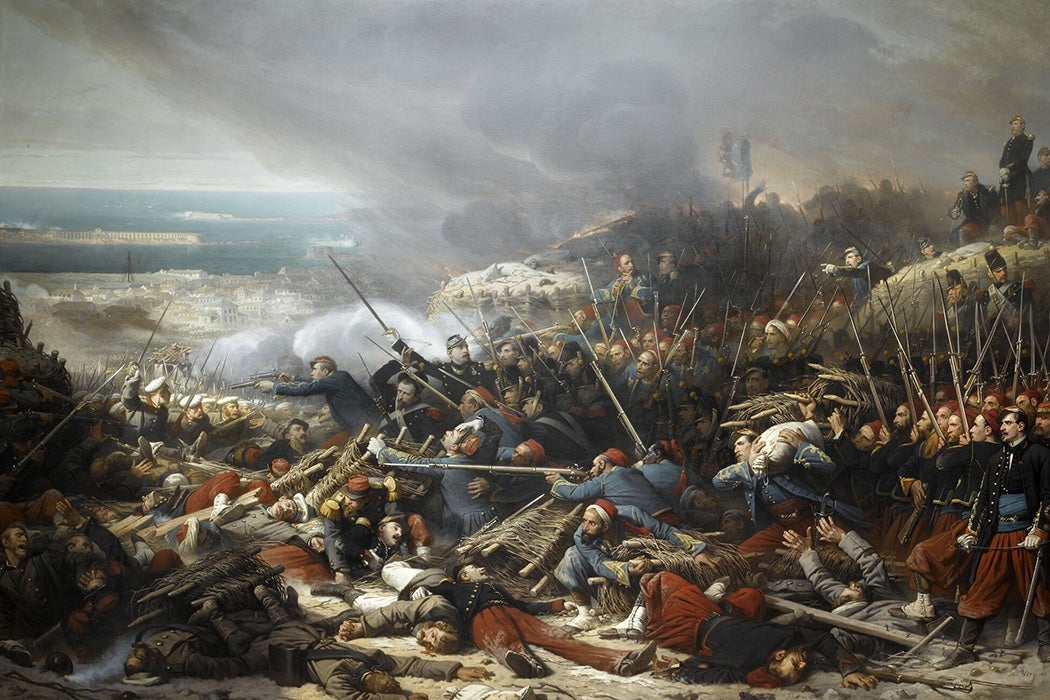How did Russia become an imperial power? Not how other European powers did, by crossing seas and oceans to colonize parts of Africa, Asia, and the Americas. Russia’s imperial growth was largely land-locked: expansion stretched continentally across Eurasia. The empire went west into Poland and Lithuania; east towards Siberia; and, in the south, towards the Caucasus region and Ottoman and Persian empires.
It’s this latter region that scholar Mikail Mamedov examines as he tracks Russian imperial views of the Caucasus, starting with the annexation of Georgia beginning in 1801.
“Russia’s concept of empire was different from that of the Western powers. Russia did not possess ‘distant colonies’ but expanded across its borders into the depths of Eurasia. It had a better opportunity for the closer integration of native and Russian nobility into one body.”
“Incorporation and assimilation of native elites” in neighboring regions became Russian policy. The rationale for this policy can be found in the Tsar Alexander I’s 1801 annexation order for the Georgian principality of Kartli-Kakheti, as quoted by Mamedov: “Not for the increase of our own might, nor for greed or the expansion of the borders of an Empire already mighty in the world, but only out of love for humanity.”
This was to be conquest for the benefit of the conquered, according to the conqueror. The “humanitarian mission” rationale—whether for colonization, invasion, or other forms of large-power intervention—has been heard a lot since around the world. Echoes of it can even be heard in Putin’s reasoning for his invasion of Ukraine today.
As with the other European powers, Russian colonizers armed with “noble goals” would “protect, civilize, and educate” the childlike, “Asiatic” peoples in the empire’s path. As Mamedov notes, the Russian civilizing mission, like so many others’ before and since, also included burning villages, hostage-taking, and putting severed heads on stakes. Civilization was literally a double-edged sword.
The idea of the civilizing mission became a more avowedly colonial project by the mid-1820s. As Russia’s expansion butted against the Ottomans and Persians, other European powers took note. Britain in particular was worried about Russian threats to its colonial system. So the Russians began to envision the Caucasus as a defensive frontier, a bulwark between them and Europe. This all came to a boil during the Crimean War (1853-1856), when Russia battled an alliance of British, French, and Ottoman forces.
Russia’s defeat, made particularly humiliating by the demilitarization of the Black Sea, resulted in a strong internal push to modernize the Russian state, military, and society at large. (Notably, serfs would be emancipated in 1861.) But Russian territorial losses were comparatively minor. An empire under the Romanov dynasty would last for another half century.
Weekly Newsletter
By 1914, the year Lenin called Russia the “prison of the nations,” less than half of the total population under the Tsar were ethnic Russians. The Bolshevik take-over, however, did not mean the end of to this multiethnic, multicultural, multi-confessional (Orthodox, Muslim, Jewish, etc.) empire. For all the “anti-imperialist” rhetoric, the enormous U.S.S.R. merely gave a new gloss to an old condition. We call it the “breakup” of the Soviet Union because more than a dozen states emerged from its dissolution, starting in 1991.
One of these new nations was Georgia, which gained nationhood one hundred and ninety years after the start of its annexation by Russia. Of course, one of the Soviet Union’s most notorious leaders was a Georgian by birth: Stalin, born Ioseb Besarionis dze Jughashvili in Gori, Georgia, in 1878, ruled the USSR for three decades. A massive statue of him outside the Gori town hall was removed in 2010 as part of the country’s de-sovietization process.
Two years before that, during the Russo-Georgian War of 2008, Gori was bombed and occupied by Russian forces for a dozen days.
Editor’s note: This article has been updated to clarify the estimated number of ethnic Russians living in the empire in 1914. The 1897 census didn’t record ethnicity, but approximately 44 percent of respondents identified as native speakers of Russian, which, supplemented by place of birth and residence, is glossed as ethnicity. The scheduled December 1915 census was cancelled due to the Great War.
Support JSTOR Daily! Join our new membership program on Patreon today.







